100 Years Ago, Brooklyn Was Too Happy To Work

It was November 11, 1918, a Monday. “Commissioner of Public Works, Joseph A. Guider had been on the alert for three days, waiting for official word that the war was over, and when the word came to him at 5 o’clock this morning he was ready to pass it immediately to James J. Byrne, Superintendent of Public Buildings and Offices, with the additional phrase, “You can turn your gang loose.”
The reference was to a gang of forty laborers whom Mr. Byrne had assembled and had ready to let all Brooklyn know that peace was here, the victory won. They began pealing the [Borough Hall] bell at once with a mighty pull that gave it a tremendous clanger, and its paean of rejoicing was unceasing all morning,” The Brooklyn Daily Eagle reported.
Almost every story that day was about the end of the Great War.
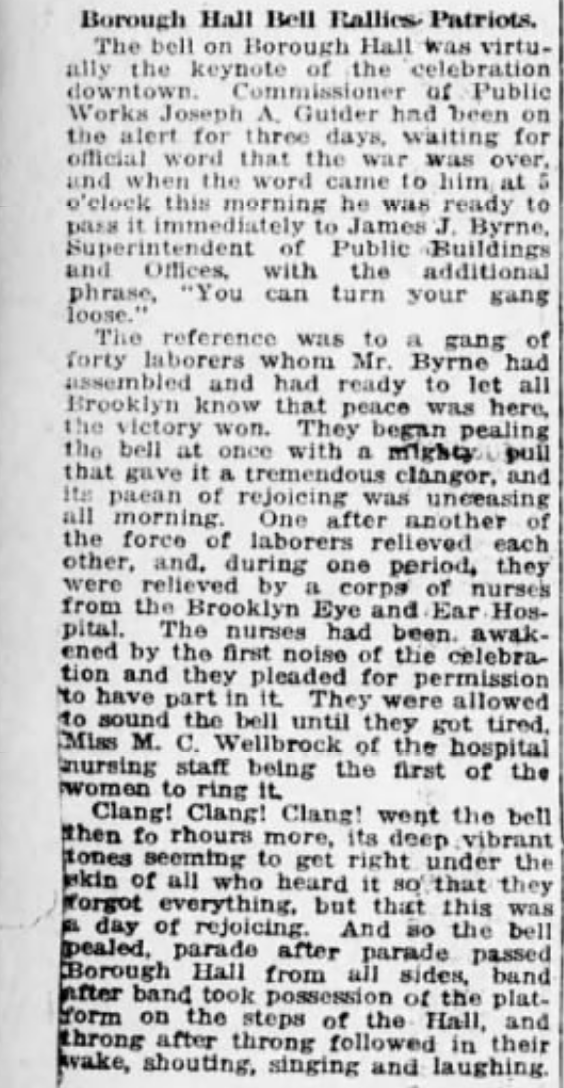
The men relieved each other and were joined by nurses from the Brooklyn Eye and Ear Hospital, awakened by the celebration and eager to take part. The bell rang for hours, welcoming parades, and bands and letting everyone know it was a day to rejoice.
Manhattan may have had the biggest parade in City’s history, but Brooklyn also came out to celebrate. Most businesses and offices closed.
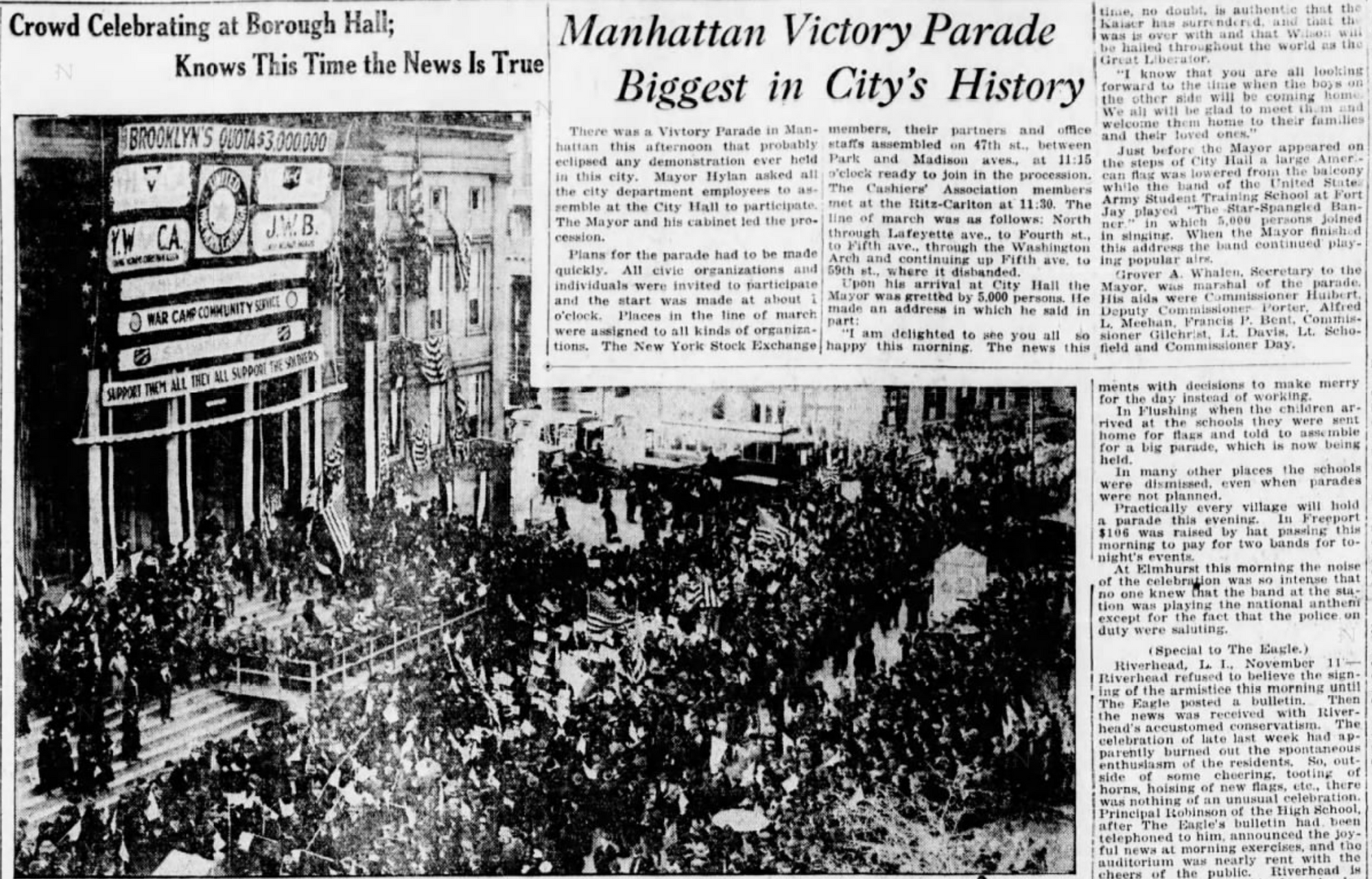
Brooklyn was loud. “Downtown the churches opened, bells rang, horns sounded. The crowds poured from the subways and elevated trains. Broadway at 9 o’clock was a seething mass of people. They had started for work, but in the glory of this celebration, there was no thought of work.
From the tower of Trinity Church came the peal of the oldest chimes in this country, chimes that sounded the news of peace at the end of the War of 1812, at the final surrender of Lee at Appomattox in 1865.”
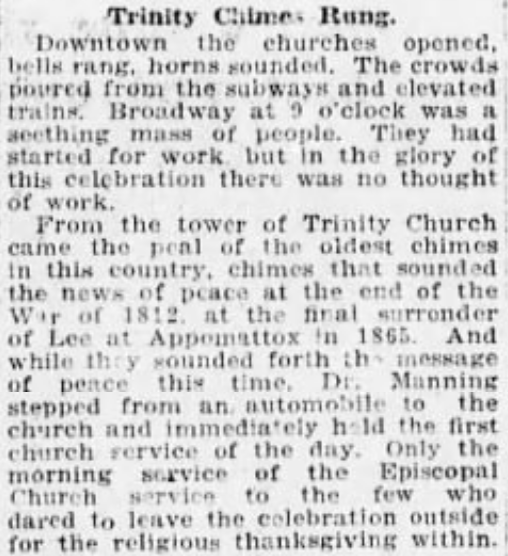
There were many parades across Brooklyn. “At 8:30 a parade of 500 workers from the E.W. Bliss plant passed The Eagle office on its way to the Borough Hall, from where it proceeded on a sort of “follow the leader” route. A banner, “We Are Too Happy to Work,” expressed the sentiments of everyone in the city.”

Girls and boys made lots of noise and sang and celebrated. Hundreds marched around neighborhoods.
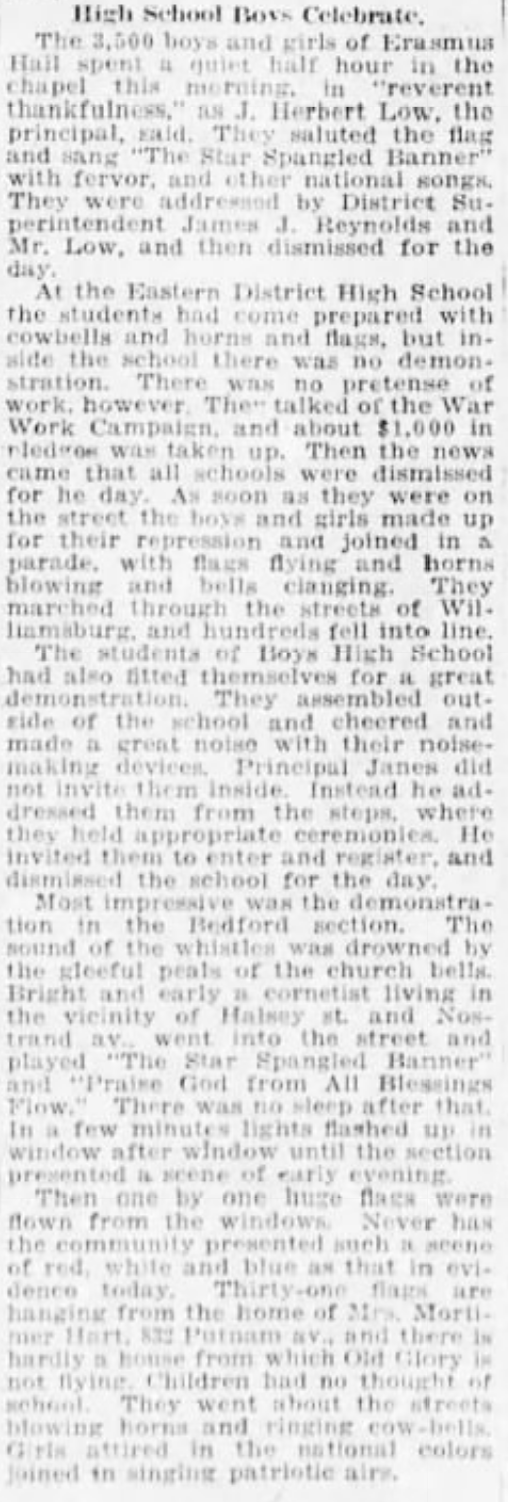
There were lots of coffins paraded around, and effigies of the Kaiser.
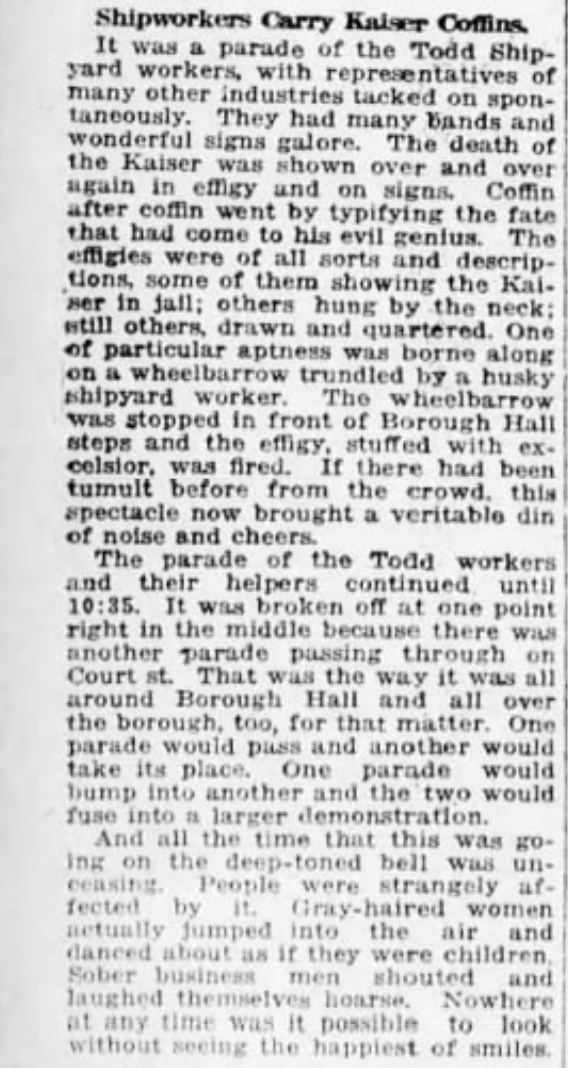
Bells were ringing, and “People were strangely affected by it. Gray-haired women actually jumped into the air and danced about as if they were children. Sober business men shouted and laughed themselves hoarse. Nowhere at any time was it possible to look without seeing the happiest of smiles.”
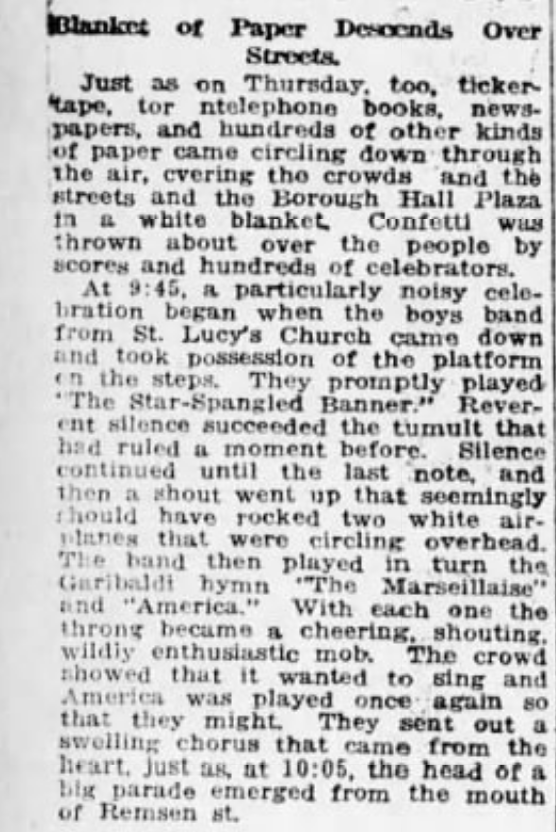
The Great War in Europe claimed the lives 2,800 men from Brooklyn, many more served, and many came home injured. Most all of the recent immigrants to Brooklyn in the early 20th century were from Europe, and many had families back in their home countries, from Italy to Poland. In Europe, millions perished in the war.
The US entered the war in 1917, and millions of young American men registered on the first day of the draft in June. The war ended at 11 am Paris time on November 11, 1918. The National World War I Museum in Kansas has great exhibits, and timelines if you’d like to learn more.




